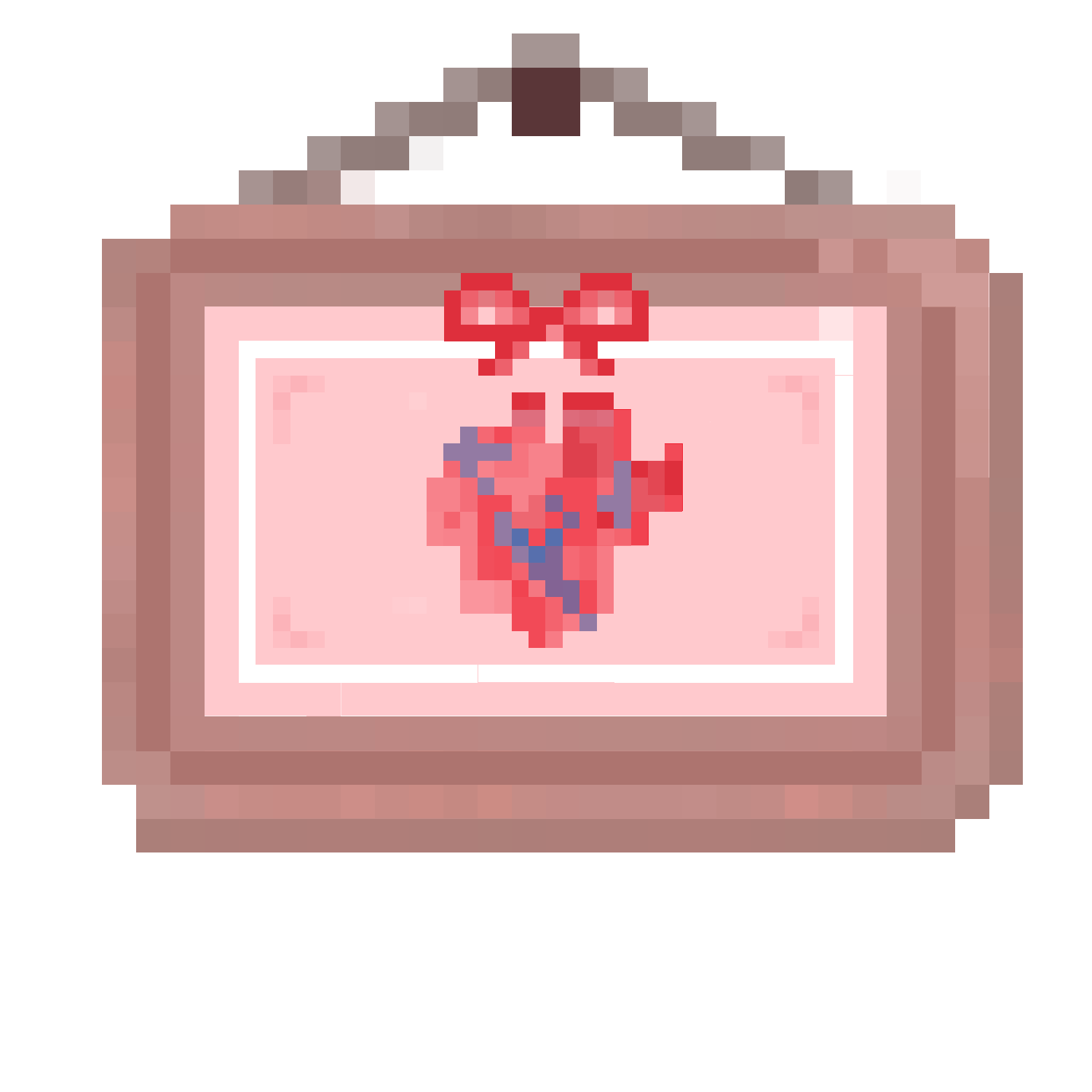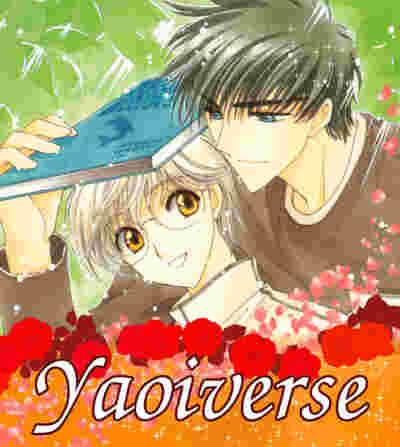Resources

Links
I've personally found these links quite cool. I am not necessarily affiliated with any of the links and they are not necessarily associated with me. I thought they would be of interest to fans of fujoshi though!
Feel free to email me if you have resources you've made, or have found something to share.-
- Yaoiverse

- "A webring for real yaoi fans."
-
- The Fandom Webring

- "A webring of personal websites for anyone in fandom." An affiliate! Contains resources and ideas for making your website too!
-
- Ladies of the Links


- "This is a webring for anyone and everyone who identifies themselves as a woman! Women led spaces are awesome, and it's always cool to see more of them! "
-
- May December Club

- "Harassment free, kink positive webring dedicated to any and all age gaps. "
-
- Adult Artists Webring

- "A directory of visual artists creating sexually-focused art who want to connect with other creators and new audiences in ways not limited to the whims of social media or large corporations."
-
- Fu-pedia

- Futekiya's encyclopedia of gay manga terms.
- Futekiya is no longer available, so this is a link to the archive.
- Pixiv dictionary

- A dictionary of common fandoms, terms, and tags within the Japanese art community. Will help immensely with finding tags for art!
- MASSIVE tumblr archive

- An older blog from Massive Gay Manga Goods, with a body focus on Gachimuchi gay manga. The information is in English language, and has answers to questions, links to contemporary artists, and images from pre-internet gay manga.
- I was introduced to Massive when I attended an interview Anne Ishii did with the artist Jiraiya in my city. Too bad the merch was too big for me to buy :p Cuz they're all out of stock now! Still, it's wonderful to see men and women working together for the art of gay manga!
- Fujoshi.info
- A huge collection of academic research papers on fujoshi culture, and gay Asian art.
- Yuricon

- "Yuricon community members participate in panels, write articles and conduct lectures all over the world, in order to expand the global Yuri community."
- Poppy Z. Brite "ENOUGH ROPE"

- A familiar story from an author who writes primarily gay male characters in horror stories. Explore the rest of the 2000-era site for ideas on how to present your characters and writing.
- "Why had I, a young female of dubious morality but favorable aspect, written a raunchy book full of gay male characters?... I've always known I was queer, but saying 'I'm not a lesbian, I'm a gay man in a female body' doesn't help matters a great deal in high school, so I stayed home nights dreaming, and eventually writing, about the torrid sex lives of gay boys."
Glossary
Here are some terms this site may use.
PLEASE NOTE: I am not an expert in any language, and I do not have a PHD in yaoi-ology. My definitions will be mostly colloquial learned from other fans, in addition to academic and commercial sources when I can find them, and my interpretations through my own lense.
I want to show that we have similar concepts around the globe by relating terms into English (i.e landmine (地雷) vs squick). Fujoshi culture is similar to any shipping culture around the globe, and there is no need to treat it with exotic orientalism or disdain.
I will provide general definitions, memes to illustrate usage, as well as my personal usage. Click the terms with arrows to expand the definition!
Boy's Love ♂♂
Boy's Love (ボーイズラブ) - A romance genre, abbreviated as BL.
Japanese publishing term for gay male romance that is technically (but not always) authored and marketed towards women. This genre is traditionally marketed towards women, because of its roots in shojo manga. "However, the actual audience includes various gender and sexual identities." The label does not describe the author's or their art - it's a marketing term that "exists not for the benefit of the works themselves, but exists for sales."
More countries like Thailand, Korea, and China also publish media labeled as BL. Chinese language has its own term, Danmei (耽美), for gay romance. Some English-language gay media is marketed as BL in Japan. Some Japanese authors may dislike the BL label for various reasons such as "They did not want their work pigeonholed like that.".
Can women write and enjoy BL? Sure! There are various reasons why a woman might enjoy fictional male romance. They might be cishet women who are attracted to men. They might be lesbians who relate to gay themes. They might actually be transmasculine and relate to the depiction of men in BL. They might just like romance regardless of gender and sexuality. They may live in a joker Society in which women are objectified as impregnation machines and homemakers, and as such may want escapism from womanhood. That's all fine to me. All that matters is how one treats real people.
Fujoshi, Fudanshi, Fujin - Fans of gay ships.
Fujoshi (腐女子) is a rotten girl.
Fudanshi (腐男子) is a rotten boy.
Fujin (腐人) is a gender-neutral rotten person, and a relatively new term originating from non-native-Japanese audiences.
Compare these terms with "shipper", "fangirl", and "fanboy" in English slang.
The term fujoshi comes from a misogynist insult. Image board users thought that shippers were unsuitable for marriage, and therefore rotten. There's also a homophobic implication from the 2ch users, that effeminate gay ships were immorally counterculture to traditional masculinity. As a triple threat, in both Japanese and non-Japanese spaces, folks that use fujoshi as an insult take a transphobic position that girls will read yaoi and be negatively influenced to become transmasculine. Since then, fujoshi has become a reclaimed term that folks may choose to describe themselves as a shipper.
It's often assumed that creators and fans of BL/yaoi are cishet girls, especially by publishers attempting to create strict market demographics. The truth is that up to 50% of BL readership identify as male, often bisexual, some gay, and some heterosexual. And that the creators of BL may be read as cishet women, but are often closeted, lesbians, transgender, or queer in other ways.
...one of the things that really, really startled me was that I always just assumed that 95% of the audience for BL manga was women, and it wasn’t.
What we actually found out was… depending on what volume was in question, fully up to 50% of our reader engagement was male. On average, it’s about 15 to 20%, and that to me was really startling, because I would not have anticipated that at all.
Furthermore, going back to the gender of creators, that’s problematic as well because sometimes BL creators– and I’m speaking just from personal acquaintance with some of these creators– may be biologically female or identify on the page as heterosexual women, but sometimes they’re actually lesbian or transgender.
For fun: a comic about the different types of slug, snake, and other fujoshi.
Yaoi - Fanart comics, often pornographic.
Considered outdated in Japan, and refers mostly to doujinshi from the 70's and 80's. Today, it's mostly used in non-Japanese spaces with its own meaning.
In western marketing from the 90's and 2000's, it denotes anime and manga with 18+ sex scenes. Compare to the western marketing term "shonen-ai" to denote all-ages works. Please note that "shonen-ai" in Japan refers to a specific era of shojo comics, and may have a pederastic connotation otherwise.
Currently in western spaces, "yaoi" is often used ironically or negatively to call back to the 2000's. See: Pass the yaoi meme, Love is love.
"depicting male characters who love each other in a way that surpasses the best of friends but are not exactly lovers...people can simply draw, write, and enjoy only the good parts of it— be it the sexy times or the fluffy, sappy exchanges between the characters."
My own pairings and stories tend to occupy this ambiguous relationship space. Not an established relationship, but something way more intimate than just friends. And we see why yaoi as a fanwork definition (especially from shonen manga) draws upon this space too!
Like Naruto and Sasuke, or Light and L - the creators may not have intended for the characters to be homosexual, but they certainly wrote these characters with homosocial tendencies and homoerotic tension! Authors will often write male-female pairings with no chemistry, while giving the male-male relationships all the drama and passion. No wonder we get so much fanart!
I personally use "yaoi" as a positive, chaotic descriptor of any fictional relationship with that fun melodrama and passion. As you can see from my Yaoi Chart, anything can be yaoi if it sparks joy!
Coupling (カップリング) - A pairing, or type of relationship.
May be abbreviated as "CP" - use context clues and do not confuse it for the English abbreviation!
The CP may denote the characters that the fan ships (i.e Scout x Spy), or the type of relationship dynamic (i.e Student x Teacher). This helps readers navigate their favored characterizations, as well as helps publishers market to a specific audience.
Compare this to AO3 tags for relationships, and roles.
Seme (攻め) - to attack--> Top sexual position.
In non-sexual art as well, the giver or active pursuer. Compare to English gay slang "Pitcher". Can sometimes have dominant connotations, but mostly means who is penetrating regardless of dom/sub. The left character in a pairing name order (Seme x Uke). Not often used in real LGBT slang, though otaku culture is starting to leak.
Uke (受け) - to recieve--> Bottom sexual position.
In non-sexual art as well, the receiver or passive one. Compare to English gay slang "Catcher". Can sometimes have submissive connotations, but mostly means who is getting bung regardless of Dom/sub. The right character in a pairing name order (Seme x Uke). Not often used in real LGBT slang, though otaku culture is starting to leak.
I turn all my faves into ukes, cuz I wanna pursue them and ukes are often be the object of desire!
- Riba (リバ) - Reversible positions. No preference for top or bottom.
Kotei (固定) - Fixed, in regards to monoshipping or name order.
There are some people who use CP固定 "fixed" to mean they only ship these characters with each other, with no preference for name order. This may befuddle others who use it to prioritize fixed name order.
Fixed position is the more common usage I've found. 左右固定 means "left-right fixed", as in the seme (left, or first name) x uke (right, or second name) name order should not be changed. Compare to some BDSM groups in which they use the specific order of dom/sub and master/slave.
For fans who have a favorite character over a favorite ship, [Character Name]左固定 or [Character Name]右固定 may be used to indicate whether they like their fave as the fandom dildo or fandom bicycle respectively.
Many authors can have strict preferences on giver/receiver dynamics for their characters. Not just in sexual positions, but also active and passive personality. As such, it's courtesy to put a content notice for reversible art/writing. Fixed shippers often will have separate tags for AxB versus BxA ships (think SasuNaru vs NaruSasu). Reversible shippers may use ABA or BAB ship names (SasuNaruSasu or NaruSasuNaru, with no particular naming order).
In many English-speaking spaces, reversible pairings are often considered the default. Note that this still carries some societal expectations, like older and larger characters having dominant connotations.
In real gay culture and in BL spaces, there is discussion over whether strict sexual positions are regressive stereotypes. In my opinion, let people have preferences IRL and in fake cartoons! It's supposed to be for fun, as long as they do not demand anything from others. No one needs to explain why they only like chocolate over vanilla ice cream.
- Landmine (地雷) - NOTP, squick, disliked pairings and tropes.
- Oshi (推し) - Huge fan of an idol, character, or pairing. Compare to English slang "stan".
Yuri ♀♀
Yuri (百合) - Lily flower--> Lesbians! Media featuring relationships between women.
Originates from the pet name "Yurizoku" for female (sometimes lesbian) readers of the Barazoku magazine. Had pornographic connotations in the 90's, but in modern days can be non-sexual as well.
Mirroring BL, there is an assumption by western audiences that yuri is made by cishet men for cishet men. In truth, the authors and audience can be any gender and sexuality. It is notable that lesbian woman authors avoided term "yuri" in the 90's due to the pornographic connotations, and instead used onna no ko x onna no ko (女の子 x 女の子).
In modern times, the term yuri has become more accepted in the LGBT community with an intentional aim to reclaim it from the straight male gaze. It has some analogues with fan usage of "yaoi", in which the audience perception is more important than author or publisher intent. i.e Sailor Moon can be considered a typical shojo manga with a heterosexual romance between Tuxedo Mask and Usagi, OR as a yuri fan one of the grand canons of lesbian work with couples like Uranus x Neptune and themes of genderfluidity and female intimacy.
Can guys write and enjoy yuri? Sure! After all, the anime adaptations of Revolutionary Girl Utena and Sailor Moon are considered great yuri works and are directed by someone considered a man. And even if the work isn't artistically acclaimed, men can have fun writing stories. All that is important in my opinion is treating real people with respect.
See also: Yuricon's essays.
Girl's Love (ガールズラブ) - Also abbreviated as "GL".
Sometimes considered a forced marketing term by publishers to mirror BL, so folks in the LGBT community may not use it.
Similar to the incorrect usage of "shonen-ai" with English speakers and male romance comics, there are some English speakers who try to use an analogous, incorrect label called "shoujo-ai" for non-sexual art. The term "shoujo-ai" should be avoided when discussing lesbian stories, because in Japan it exclusively refers to men with fetishes for young girls.
- Tachi (タチ) - Top. May come from the term for a male kabuki role, or a type of long sword. Used in real (L)GBT slang.
- Neko (ネコ) - Bottom. Can mean kitty cat! Used in real (L)GBT slang.
♂♂ Geikomi ♂♂
Geikomi (ゲイコミ) - Gay comics. Usually for a gay male audience.
It is stereotyped that geikomi is more focused on sex for a male audience, while BL is more romantic for a female audience. In recent years, there is more crossover between geikomi and BL storytelling and authors.
...what happens when the creator is a woman doing more hardcore work? Is that considered gay? Is it BL just because she’s female? Is it about the audience, or is it about the creators?
...And then sometimes it’s the case that a woman will draw sort of muscle-y characters and then take on male pen names for publication in gay media.
Barazoku - "Rose Tribe", a gay men's magazine.
The magazine was first published in Japan, in the 1970's. The magazine contained many subjects from news, interviews, photos, and sometimes comics. The term "bara" to refer to gay men is considered outdated and offensive in Japan, comparable to the english pejorative "pansy". The magazine Barazoku was part of a movement to reappropriate the term "bara" for gay men to use for themselves.Non-Japanese people saw the pejorative use of "bara" by heterosexual admins on image boards, and thus mistakenly use the term "bara" to refer to hyper-masculine gay comics, despite the Barazoku magazine featuring mostly slim models. There are gay manga artists who do not like their work to be labeled "bara", though some see the use of it in a marketing sense.
Gachimuchi (ガチムチ) - Muscle-chubby body type, like a wrestler.
Popular in gay comics. Jiraiya's art is one of the most popular examples. Somewhat comparable to the English term "Bear" for big meaty men, though gachimuchi doesn't need to be hairy. See also: gachi-gachi for muscle men, muchi-muchi for fat men, and gacchibi for short and stout men. These terms make it easy for folks to find their taste in men in a single word - just like otters, pups, bears, and cubs in western gay culture. Or how fujoshi can categorize their taste in relationships with endless seme and uke variations.
In English gachimuchi memes, Billy Herrington (Billy Aniki ビリー兄貴) porn videos are inaccurately called "gachimuchi", though his body is more muscular (Gachimuki) than chubby.
Note: the meme version of Gachimuchi was originally intended to mock gay men. (Rule 2 on this subreddit) You can see this homophobia mirrored in the ironic image board meme of the comic "Kuso Miso Technique" (aka "Yaranaika"), in which the shock value of gay scat porn (to the heterosexual gaze) was enough for it to be constantly pirated and reposted. Comedians like Hard Gay, a man who's shtick relied on him annoying people with pelvic thrusts while wearing gay BDSM gear, were also popular with the same audience at the time.
Gengoroh Tagame speaks on gay art being mocked:
...people might watch...just to laugh at it, like ‘This is so extreme and ridiculous.’ That becomes a problem because that’s an infringement on my freedom of expression if somebody thinks it’s a joke.
And then the stuff that the hetero Internet fans want or look for are those extreme stories, precisely because the more extreme it is, the more entertaining they find (it), for the wrong reasons. I’m trying to make depictions of gay men that are more about their hirsuteness or their manliness and it ends up being like, for example, something like Cretian Cow becomes really popular with hetero thrill seekers.
Sometimes my most aggressive work is turned to an internet meme like some kind of a… “Two Girls, One Cup,” you know? For that to happen to my work is… the most annoying thing.
(Interestingly enough, the comic "Kuso Miso Technique" was originally printed in the 80's by Bara-Komi, an inprint of the above mentioned Barazoku magazine that gave rise to the English usage of the term "bara".)
Nowdays, some of the original actors in the Gachimuchi porn videos embrace their notoriety. Billy Herrington had a figure made of him by NicoNico as well as making stage appearances for cheering Japanese fans and recieving the warm nickname "Aniki" (big brother), and Van Darkholme (who is the popular gachimuchi actor for audiences in Russia and China) streams and creates variety videos for his fans. It can be seen that the current crop of Gachimuchi meme fans support the actors by sending them gifts, and financially supporting their endeavors, so the original intent of homophobia may have washed out by now. Perhaps the actors embracing the humor as well as the "ironic fans" may have made the meme a more positive thing.
Bishonen (美少年) - Literally "beautiful young boy".
Feminine men is a beauty standard stemming from historical Indian, Chinese, and Japanese culture. Bishonen refers to teenage boys in Japanese, while in English spaces may be used to refer to men of all ages. Historically, the term bishonen supplanted the term wakashu in pederastic male relationships (compare to Greco-Roman catamites).
In the 20th century, it's often used in relation to shojo manga characters, marketed to teenage girls, related to the "shonen-ai" genre of works that deal with angst and coming-of-age sexuality.
From wikipedia with citations:
Takemiya has stated that her use of protagonists that blur gender distinctions was done intentionally, "to mentally liberate girls from the sexual restrictions imposed on us [as women]"
James Welker notes in his field work that members of Japan's lesbian community reported being influenced by manga featuring characters who blur gender distinctions, specifically citing Kaze to Ki no Uta and The Rose of Versailles by Year 24 Group member Riyoko Ikeda.
I interpret the usage of bishonen in this type of shojo manga as a reinterpretation of the original pederastic connotations, from a modern female lense. Many of these shojo manga deal with man-boy relationships in a depressing, traumatizing manner. And many women have experienced sexual trauma in their lifetime, which connects to the draw of rape and age-related fiction and fantasy for women. As the mangaka Takemiya says in the quote above, sometimes it's easier to process certain subjects when the characters are not exactly the same as yourself.
Sometimes in shonen manga, marketed to teenage boys, characters may be drawn in bishonen style to appeal to female audiences, and to create a sense of rivalry in boys. In English communities, fans may use the shortened term "bishie" to refer to pretty men of any age.
Feminine men are popular amongst teenage girls, who may find girly boys less intimidating than fully pubertized manly men. Grown men often fashion themselves as pretty, androgynous boys to appeal to women, as seen in glam rock, J-rock, and visual kei.
Contrast with western culture, in which feminine men are considered gay.
Compare with the oft-derisive concept of young and dumb "twinks" in gay male culture.
Compare "bishonen" with male heartthrobs marketed to teenage girls: The Beatles, Backstreet Boys, or Edward Cullen.
See also:
- Bijin (美人), a beautiful person, often female.
- Bidanshi (美男子), a beautiful man of any age.
- Bichūnen (美中年), beautiful middle-aged men 😏.
FUBfree - Follow, Unfollow, Block free.
You can do any of the above actions to the account without judgement. Common in Korean spaces. FUBfree is a thing because there are some people who will get publically angry if you break mutuals or block them. You can see this in English-speaking spaces too - i.e "block me if you break mutuals".Dead Dove (do not eat) - A dark fic warning.
Art and writing that is unapologetically disgusting and grotesque, what did you expect when you clicked on Dead Dove? Comes from a TV show quote.RPF - Real Person Fic.
Fake stories based on fictionalized versions of real people. Often seen with music/band fandom, and actors. Controversial when written about living persons, acceptable in the mainstream when about long dead figures like George Washington. Can have crossover with parody, political cartoons, and historical fiction. RPS (real person shipping, or slash) is a subcategory for RPF material involving romantic relationships.
Compare to the Japanese term namamono (生モノ), raw food.
Weeb - A non-Japanese person who is obsessed with Japanese culture.
"Weeb" has negative connotations, and is associated with white men who blindly worship Japan without caring about actual Japanese people. Comes from the nonsense word "weeaboo" from a Perry Bible Fellowship comic, I see the short form "weeb" more often in these 180 character limit Twitter days. Compare to the Japanese term "Otaku". May be reclaimed by nerds.- Selfshippping - Imagining oneself romantically with a fictional character or celebrity. Compare to the Japanese term "yumejoshi" (dreaming girl) and the market of Y/N visual novels and Otome games.